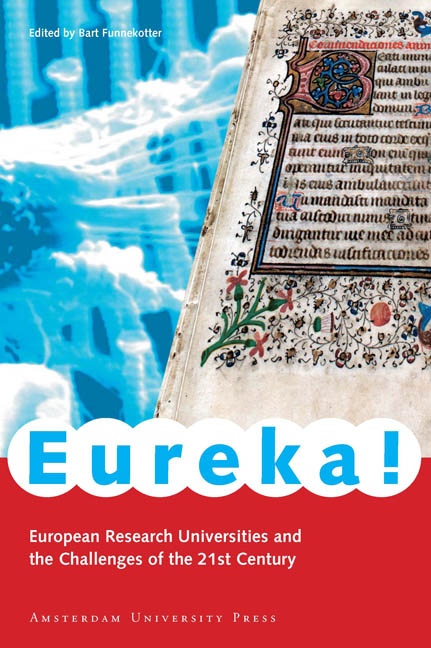Book contents
- Frontmatter
- Contents
- Foreword
- Introduction: Challenges of the Twenty-first Century
- Cambridge: Cambridge University
- Edinburgh: University of Edinburg
- Geneva: Université de Genève
- Heidelberg: Ruprecht-Karls-Universität
- Helsinki: Helsingin Yliopisto
- Leiden: Universiteit Leiden
- Louvain: Katholieke Universiteit Leuven
- Milan: Università Degli Studi Di Milano
- Munich: Ludwig-Maximilians-Universität
- Oxford: Oxford University
- Stockholm: Karolinska Institutet
- Strasbourg: Université Louis Pasteur
Helsinki: Helsingin Yliopisto
Published online by Cambridge University Press: 23 January 2021
- Frontmatter
- Contents
- Foreword
- Introduction: Challenges of the Twenty-first Century
- Cambridge: Cambridge University
- Edinburgh: University of Edinburg
- Geneva: Université de Genève
- Heidelberg: Ruprecht-Karls-Universität
- Helsinki: Helsingin Yliopisto
- Leiden: Universiteit Leiden
- Louvain: Katholieke Universiteit Leuven
- Milan: Università Degli Studi Di Milano
- Munich: Ludwig-Maximilians-Universität
- Oxford: Oxford University
- Stockholm: Karolinska Institutet
- Strasbourg: Université Louis Pasteur
Summary
University of Helsinki in facts and figures:
Founded in 1640 (in Turku though, moved to Helsinki in 1827)
38,454 students
7,445 staff
Budget € 475 million
The heart of Helsinki is the perfect place from which to glimpse the essence of Finland. Standing next to the statue of Russian Tsar Alexander II at the centre of the Senate Square, designed by German architect Carl Ludwig Engel, it is possible to take in an overview of Finnish history simply by turning round in a half circle: the main building of the university to the left, the Lutheran cathedral straight ahead and the seat of the government to the right.
To this day celebrations of Finland's independence in 1917 take place in this square, Senaatintori as it is called in Finnish and Senaatstorget in Swedish. Why Swedish? Years after becoming independent, Finland still has two official languages, which means two street signs in the square as well as every other road – even though only six percent of the population speak Swedish.
Until the beginning of the nineteenth century, Finland was a province of Sweden and served primarily as a buffer to keep Sweden's arch enemy Russia at a safe distance. In 1809 after yet another war, Finland was absorbed by Russia and became a Grand Duchy. The Governor General represented Tsar Alexander I in Helsinki.
It was during this period that the present university began to take shape. A university had already been founded in 1640, but it was in Turku, nearly two hundred kilometres west of Helsinki and much too close to Sweden for the Tsar's liking. When the centre of Turku was destroyed by fire in 1827, he seized the opportunity to move the entire university to Helsinki and within a year the Imperial Alexander University had come into existence.
Around the same time a growing sense of nationalism led to the spread of the Finnish language from the countryside to urban areas and consequently to the university where, until then, only Swedish had been spoken. Even today one can tell by the shape of the white caps worn by students and by the emblem upon them which is their native language, and which of the two student newspapers (each with its own editorial board) they read.
- Type
- Chapter
- Information
- Eureka!European Research Universities and the Challenges of the 21st Century, pp. 62 - 74Publisher: Amsterdam University PressPrint publication year: 2005



